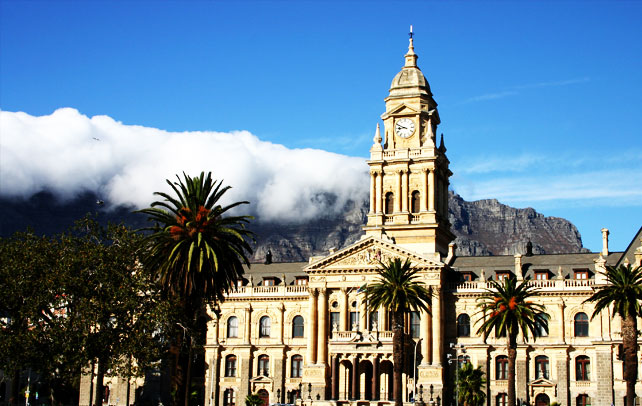Fun Facts About Cape Town

The provincial capital and primate city of the Western Cape, Cape Town also serves as the legislative capital of South Africa. Divinely beautiful and densely populated, this “Mother City” of South Africa is the second largest populated metropolis in the country. Perched on the northern end of the Cape Peninsula with the Table Mountains forming the most exotic background to the city bowl, this sporty, sociable city has loads to offer to everyone. The weather is breathtaking with mild wet winters and warm summers. Cape Town is the economic center of the Western Cape Province. There is a huge influx of tourists to Cape Town almost all year round due to its amicable climate, breathtakingly beautiful biodiversity, and well-developed infrastructure. The Cape Town beaches are one of the most popular tourist attractions with the warm water and the Agulhas currents totting up as the perfect setting for surfing. Brimming with rich cultural heritage, the city is filled with cape Dutch style buildings and heritage monuments. The city is well connected through air, sea, rail and roadways. Read on for some more interesting facts on Cape Town.
Fun Facts About Cape Town
- Before Portuguese explorers and settlers discovered Cape, an African tribe called the “Khoikhoi”, meaning “men of men”, populated it. The khoikhoi were related to the “San” Bushmen of South West Africa and were mainly agriculturists.
- Bartholomew Dias originally named Cape Town as Cape of Storms after he encountered terrible storms on the East Coast of Cape Town. However, the name was later changed to the Cape of Good Hope to please the king of Portugal. The name was modified to give the impression that the cape provided hope for the voyagers exploring the sea route to the East.
- Sir Francis Drake, the English Explorer, famously referred to the Cape as “The fairest Cape in all the circumference of the world.”
- Afrikaans is the most widely spoken language in Cape Town followed by Xhosa and English.
- The Table Mountain National Park has 2,200 different kinds of plants, which is more than the species found in the whole of New Zealand and the United Kingdom.
- Table Mountain‘s peak, Lion’s Head has not seen a lion for over 200 years now. After once thriving in the area, and no doubt giving their name to the smallest peak at the western tip of the mountain, the last lion was shot in 1802.
- The Port of Cape Town is supposed to be one of the busiest shipping corridors in the world.
- The Castle of Good Hope in Cape Town is the oldest building in South Africa. It was built between 1666 and 1679 by the Dutch East India Company.
- The highest sculpture in South Africa — the Knot, also called as the bent paper clip, is an abstract sculpture made from cast steel.
- You can watch whales at the seaside town of Hermanus as close as 20 meters. There is also the annual Whale Festival, which takes place in late September.
- Cape Town has its own constellation Mons Mensa in the Large Magellanic Cloud, a neighboring galaxy.
- Kirstenbosch botanical garden was the first of its kind in the world founded in 1913 to preserve South Africa‘s indigenous plants.
- The most travelled highway is nicknamed ‘The Blue Route’ because a thick blue pencil color was used to draw the original plan. The real name of the highway is ‘The Van Der Stel Highway’. It is also known as the M3.
- Cape Town has the third largest shopping center, Canal Walk in Africa after Johannesburg and Durban.
- The oldest operating eating-house or restaurant is Constantia Nek Restaurant. The tea room was established as ‘The Nek’ in 1923.
- Cape Town has five animals that form the big five’s – elephant, buffalo, leopard, lion and rhino. It is also home to the little five. They are – rhino beetle, ant lion, leopard tortoise, elephant shrew and buffalo weaver.
- Cape Town is also lovingly called the ‘Mother City’.
- The oldest statue of a public figure in Cape Town is that of Sir George Gray, Governor to the Cape 1854-1861, and is to be found in the Company Gardens at the top of Adderley Street in Cape Town.
- Just like London and Paris, Cape Town is situated on a river called the Fresh River that comes off the slopes of Table Mountain and runs through the Company Gardens.
- The oldest living tradition in Cape Town is the firing of the Noon Day Gun at Lion Battery on Signal Hill, which is being done for 200 years now. This is done to signal 12:00 noon.
- You can also catch a glimpse of the African Penguins at the Boulders Beach, which hosts a penguin colony that was established in 1982.
- Cape Town was the first city outside Europe to get the blue beach status for its high water quality, facilities, safety and cleanliness.
- Queen Victoria Street in Cape town is the shortest mountain pass in South Africa at 250 meters long and extending a climb of 50 meters.
- Dr. Christiaan Barnard, at Groote Schuur Hospital, Cape Town, performed the first human heart transplant in the world in 1967. He was also the first to do a heart-lung transplant in 1971.
- A device called a “Water Watch”, which is 300 years old is found at Cultural museum in Cape Town.
- Green Point Lighthouse is the oldest in the country and is also the “Lighthouse services” head office.









